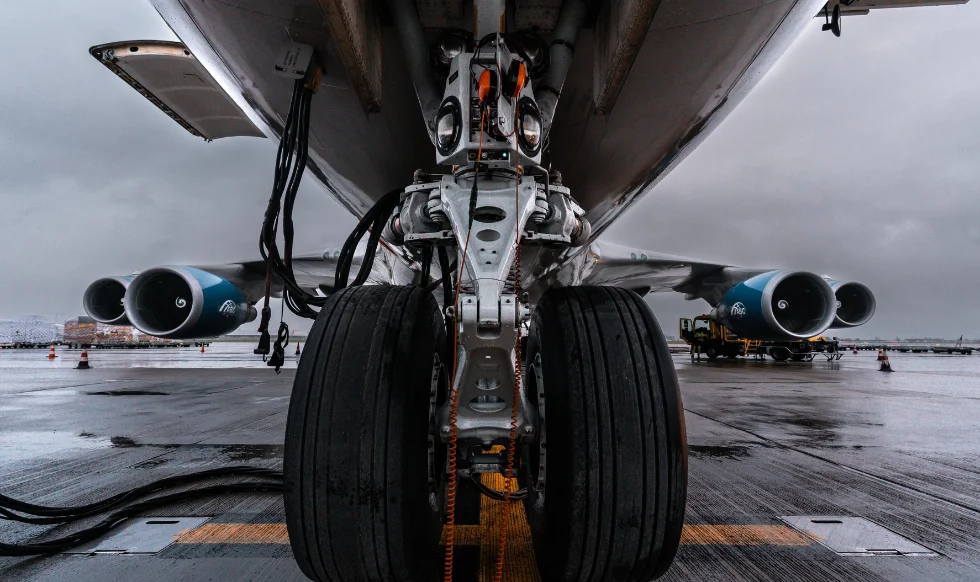Introduction
Flying is one of the safest modes of transportation, with millions of passengers safely reaching their destinations every day. However, when aviation accidents do occur, they tend to have catastrophic consequences—often leading to severe injuries, loss of life, and long-term emotional trauma for survivors and their loved ones. Whether you or someone you know has been affected by an aviation accident, understanding its causes is a critical first step in navigating the aftermath.
Aviation accidents are rarely the result of a single issue. Instead, they often stem from a combination of human error, mechanical failure, environmental factors, and organizational shortcomings. These factors not only raise serious safety concerns but also present complex legal challenges when victims and their families seek justice. Knowing what may have caused an accident can help victims understand their rights and potential legal options.
At Hurt Aid, we know that dealing with the aftermath of an aviation accident can feel overwhelming. That’s why we’re here to help you access trusted resources, connect with experienced attorneys, and take the first step toward finding clarity and support. Whether you’re seeking answers for yourself or a loved one, we aim to provide guidance at every step of the journey.
Human Error
1. Pilot Error
Despite rigorous training and strict licensing requirements, pilot error remains one of the leading causes of aviation accidents. Pilots are responsible for making critical decisions in real-time, often under extreme pressure. Fatigue, distraction, miscommunication, or even momentary lapses in judgment can lead to tragic outcomes.
For example, improper landing procedures or failing to follow standard protocols during an emergency can result in a crash. In cases involving pilot error, victims may seek legal claims against the airline, as employers are typically liable for their pilots’ actions. Preventative measures such as better training programs and mandatory rest periods for pilots are crucial in minimizing such incidents.
2. Air Traffic Control Error
Air traffic controllers play an equally vital role in ensuring flight safety. They coordinate aircraft movements on the ground and in the air to prevent collisions and maintain orderly traffic flow. Errors in communication, mismanagement of flight paths, or providing incorrect instructions can lead to devastating mid-air collisions or runway incursions.
An example of air traffic control error is when two aircraft are directed onto the same runway without proper clearance, leading to a collision during takeoff or landing. Victims of such accidents may have legal recourse, as regulatory bodies overseeing air traffic control operations can be held accountable. Strengthening communication protocols and increasing staffing levels are key steps in reducing these risks.
Mechanical Failures
1. Engine Failures
Engine failure is one of the most alarming situations a pilot can face. When an engine malfunctions mid-flight, the aircraft may lose power, resulting in an emergency landing or, in the worst-case scenario, a crash. Mechanical issues can arise from inadequate maintenance, wear and tear, or manufacturing defects. For example, if an airline neglects routine inspections or uses substandard replacement parts, the risk of engine failure increases significantly.
In legal terms, engine failure cases often involve product liability claims against the manufacturer or maintenance-related claims against the airline. Victims or their families may be entitled to compensation if negligence can be proven. Regular maintenance, rigorous inspection schedules, and adherence to manufacturer guidelines are essential in preventing these types of accidents.
2. Faulty Instruments or Systems
Modern aircraft rely heavily on sophisticated instruments and automated systems for navigation, altitude control, and communication. When these systems fail—due to either design flaws or improper maintenance—the crew may lose critical situational awareness, leading to potentially fatal errors.
One notable example is when faulty altitude sensors provide incorrect readings, causing pilots to either ascend or descend at the wrong time. Legal claims in such cases can involve the aircraft manufacturer or the maintenance provider, depending on the nature of the fault. Improving the quality of aircraft components and enhancing diagnostic systems can help reduce these failures.
By understanding the mechanical factors that contribute to aviation accidents, victims and their families can better assess their legal options. Next, we’ll explore how weather conditions play a role in many aviation incidents.
Weather-Related Issues
1. Turbulence
Turbulence is one of the most common weather-related issues affecting flights. Although it’s usually a routine part of air travel, severe turbulence can cause injuries to passengers and crew, especially if they are not properly seated or secured. Turbulence is often caused by sudden changes in wind speed and direction, and while pilots do their best to avoid it, it’s not always possible to predict or prevent.
For passengers injured during turbulence, it may be possible to file a claim against the airline if the crew failed to follow safety protocols, such as providing adequate warnings or ensuring seat belts were fastened. While turbulence itself may not always be avoidable, better forecasting and stricter safety protocols can reduce the risk of injury.
2. Storms and Visibility Problems
Severe weather, including thunderstorms, snowstorms, and heavy fog, poses significant risks during takeoff and landing. Poor visibility can lead to misjudged landings, while icing on wings and engines can reduce the aircraft’s performance. Despite advances in technology, such as onboard weather radar and ground-based support systems, weather remains a major challenge in aviation safety.
One tragic example involved an aircraft attempting to land in heavy fog, where the pilots miscalculated their altitude due to poor visibility and lack of visual references. In cases like these, victims or their families may be entitled to compensation if it’s proven that the airline took unnecessary risks or failed to divert the flight to a safer airport. Investments in weather forecasting technology and improved pilot training can help mitigate these dangers.
Weather is unpredictable, but understanding how it can lead to aviation accidents can empower victims to seek justice when negligence plays a role. Next, we’ll discuss organizational and regulatory failures that often contribute to these incidents.
Organizational and Regulatory Failures
1. Poor Maintenance Practices
Airlines and maintenance providers are legally obligated to follow strict safety regulations and conduct routine inspections of their aircraft. However, when companies prioritize cost-cutting over safety, crucial maintenance tasks may be overlooked, leading to preventable accidents.
For instance, failure to inspect critical components such as engines, hydraulic systems, or landing gear can result in malfunctions mid-flight. In one case, an airline was held liable for a crash after investigators found that a mechanical failure could have been avoided with proper maintenance. Victims in such cases may pursue legal claims against the airline for negligence. Regular audits and stricter regulatory enforcement are key to preventing these types of failures.
2. Inadequate Safety Standards
In some instances, regulatory bodies themselves may contribute to accidents by failing to enforce or update safety standards. For example, if a government aviation authority delays implementing new safety technology or overlooks violations by airlines, they may share responsibility for accidents.
One notable case involved outdated air traffic control systems that failed to prevent a mid-air collision. Legal claims in such situations often target both the airline and the regulatory body. Advocacy for better oversight, stricter compliance, and investment in new safety technologies can greatly reduce future risks.
3. Training and Crew Preparedness
Beyond regulatory standards, the level of training provided to airline staff—including pilots, maintenance teams, and cabin crew—plays a critical role in preventing accidents. Insufficient training or failure to conduct routine safety drills can leave crews unprepared to handle emergencies.
When it’s found that an airline did not provide adequate training, victims may have grounds to seek legal action, especially if better preparation could have prevented the accident. Implementing rigorous training programs and conducting regular emergency simulations are essential measures in improving safety.
Organizational and regulatory shortcomings can have far-reaching consequences, making it crucial for victims and families to understand their legal options when seeking justice. Next, we’ll examine external factors such as sabotage and wildlife interference.
Sabotage and External Factors
1. Acts of Sabotage and Terrorism
Acts of sabotage, including terrorism, though rare, have historically been among the most devastating causes of aviation accidents. These incidents can involve deliberate actions to harm passengers and crew, such as planting explosives, hijacking, or tampering with critical aircraft components. The aftermath of such events often leads to complex legal battles involving multiple parties, including airlines, airport security agencies, and even governmental bodies.
Victims and their families may pursue claims against airlines or airport authorities if negligence in security measures contributed to the incident. For example, if airport security failed to detect a weapon or explosive device, they could be held liable for the breach. These cases underscore the importance of rigorous security protocols, advanced screening technology, and continuous staff training to prevent such tragedies.
2. Bird Strikes
Although it might seem minor compared to other causes, bird strikes are a significant concern in aviation safety. When birds collide with an aircraft—particularly during takeoff or landing—they can cause serious damage to engines, windshields, or other vital components. A bird strike can lead to emergency landings or, in rare cases, catastrophic accidents.
Airports are generally responsible for maintaining wildlife control measures, such as using bird deterrent systems. If an airport fails to implement effective wildlife management and a bird strike results in an accident, victims may have grounds for legal action. Ongoing improvements in bird detection technology and wildlife management strategies have been essential in reducing these incidents.
3. Drone Interference
With the rise in the popularity of drones, there has been an increasing number of near-miss incidents between drones and commercial aircraft. If a drone collides with an aircraft, it can damage critical components and create dangerous situations for pilots. In such cases, drone operators can face serious legal consequences, and victims may pursue compensation if negligence is involved.
Governments have responded by implementing stricter regulations on drone usage near airports, but enforcement remains a challenge. Increased public awareness and better enforcement of no-fly zones around airports are vital in preventing drone-related accidents.
External factors like sabotage, wildlife, and drones highlight the unpredictable nature of aviation accidents, making it crucial for victims to have the right legal support. Understanding these factors can help victims and their families make informed decisions when seeking justice.
Legal Considerations After an Aviation Accident
Aviation accidents often lead to significant physical, emotional, and financial harm for victims and their families. Understanding the legal landscape after an accident can be overwhelming, especially with the complex web of parties potentially involved—airlines, manufacturers, regulatory bodies, and third-party service providers.
Who Can Be Held Legally Responsible?
Depending on the cause of the accident, different parties may be held accountable, including:
- Airlines – For negligence in pilot training, maintenance, or operational procedures.
- Aircraft Manufacturers – If the accident was caused by a defect in design or manufacturing.
- Maintenance Providers – If inadequate maintenance or inspections contributed to the incident.
- Regulatory Bodies – In cases where oversight failures or outdated safety regulations played a role.
- Third Parties – Such as airport operators or air traffic control agencies, if their errors led to the accident.
Types of Legal Claims
Victims and their families may pursue various legal claims, such as:
- Personal Injury Claims – To seek compensation for medical expenses, lost income, and emotional distress.
- Wrongful Death Claims – Filed by families of victims who lost their lives in the accident.
- Product Liability Claims – Against manufacturers or parts suppliers if defective equipment contributed to the crash.
Challenges in Aviation Accident Cases
Aviation accidents are often investigated by national and international authorities, and these investigations can take months or even years to complete. While these investigations aim to determine the cause of the accident, victims should not wait for the final report to seek legal help, as statutes of limitation (filing deadlines) vary by jurisdiction.
Additionally, aviation laws are governed by both domestic and international regulations. Depending on where the accident occurred, different legal frameworks may apply, making it essential to work with attorneys experienced in aviation law.
The Role of Legal Professionals
Given the complexity of aviation accident cases, having experienced legal professionals on your side is crucial. Attorneys specializing in aviation law can help victims and their families understand their rights, gather necessary evidence, and build a strong case to seek compensation.
Conclusion
Aviation accidents, though rare, have far-reaching impacts on victims and their loved ones. Whether caused by human error, mechanical failure, environmental conditions, or organizational lapses, these incidents often lead to serious injury, emotional trauma, and financial burdens. For those affected, understanding the causes of aviation accidents can help in determining who may be legally responsible and what steps to take next.
At Hurt Aid, we understand how overwhelming it can be to navigate legal claims after an aviation accident. That’s why we’re here to connect you with trusted attorneys and provide the resources you need to make informed decisions. Whether you’re a victim seeking justice or someone supporting a loved one through the process, Hurt Aid is here to help. Contact us today to take the first step toward finding clarity and support in this challenging time.Learn about common causes of aviation accidents and how victims can seek legal help. Hurt Aid is here to guide you every step.





